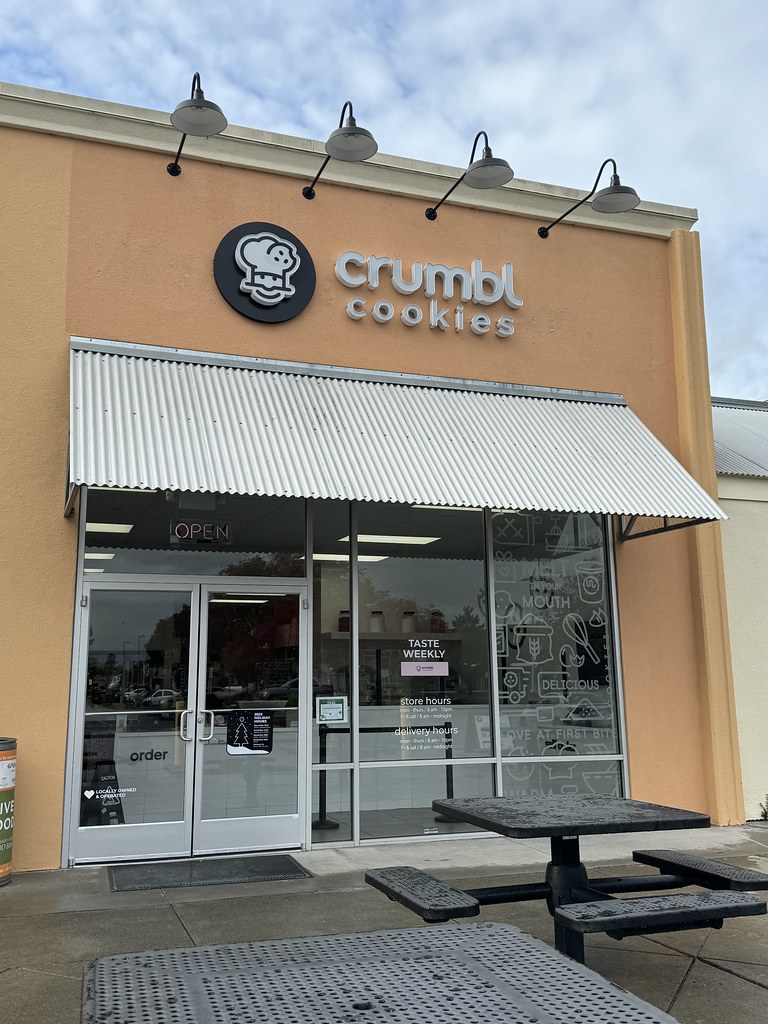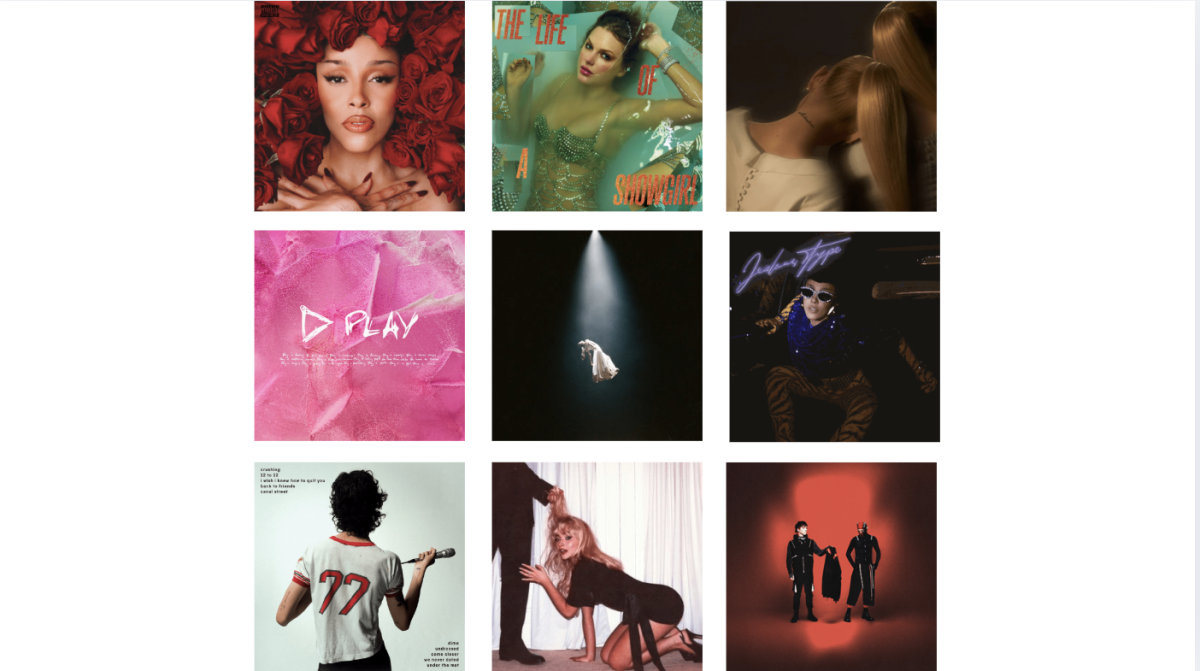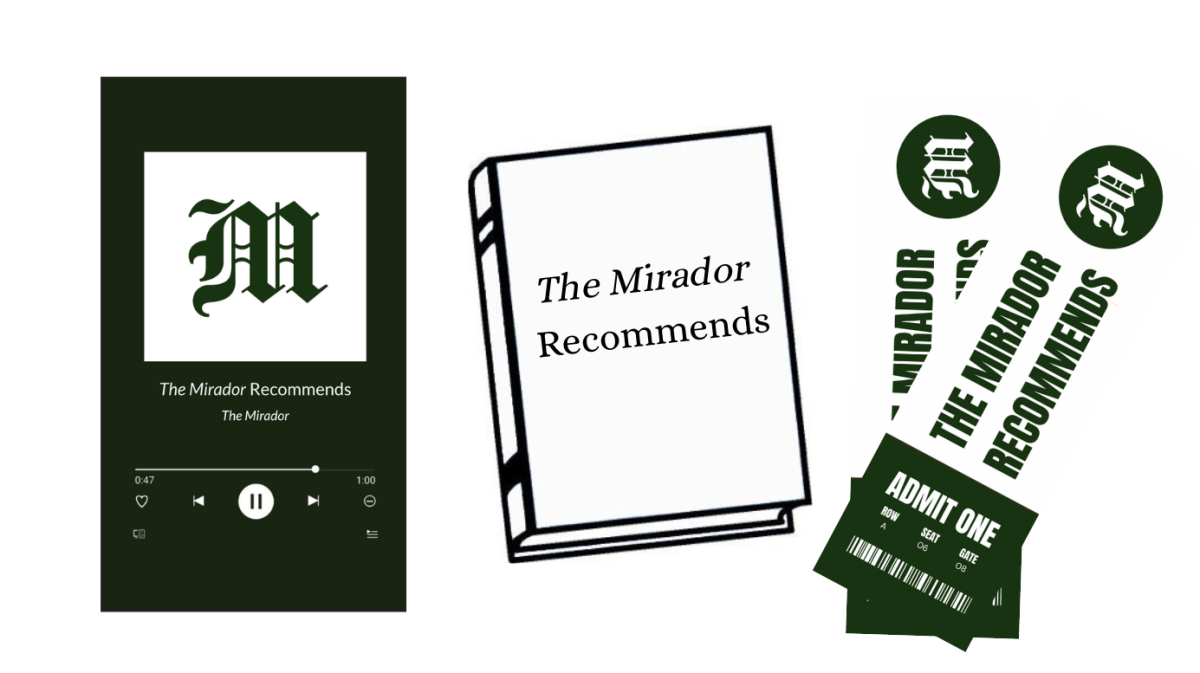On Sept. 29, herds of Australians raced to huddle around a bootleg Crumbl cookie popup in Sydney. Despite being stale and literally crumbling from days of rotting in the seller’s suitcase (which were smuggled from Hawaii), the $17.50 USD cookies generated 45-minute waits and hundreds of customers. But why? What makes Crumbl cookies so enticing that buyers will sacrifice their time and bank accounts for a hardened mix of flour and sugar — even when it isn’t the “real thing?”
Let’s start with the facts: Crumbl boasts exorbitant prices and eye-boggling nutritional content. They aren’t cheap, cashing in at $5 each, and most of the cookies have upwards of 700 calories. Their pink sugar cookie has 760 calories (over three times greater than their competitor Insomnia Cookie), and 76 grams of sugar, 1.5 times the daily maximum.
Plus, Crumbl cookies’ taste is decidedly mediocre. Most cookies are nausea-inducing, which checks out considering their nutritional value (or lack thereof) and cloying sweetness.

So, if not taste, what draws people in, inciting hordes of people to cluster around illegal popup establishments? What causes students to yell across halls about weekly flavor announcements, begging their friends to make the 30 minute trek to Walnut Creek for the nearest store? Marketing.
Since its founding in 2017, Crumbl has established over 980 locations across the United States, Canada, and Puerto Rico. Crumbl’s popularity and rapid takeover in the US — recently exceeding $1 billion in sales — was expedited by its virality across social media platforms and its experience-based marketing.
This experience-based marketing is boosted by Crumbl’s weekly rotations. By creating new flavor lineups each week, Crumbl generates novelty each week. It’s akin to the excitement of pumpkin spice season and the inauguration of the PSL (pumpkin spice latte) except, rather than waiting entire months for the season to change and new items to arrive, sweet-treat fanatics merely have to wait seven days for new lineups.
Plus, Crumbl’s weekly lineup switches force customers to race against the clock to make it before their favorite cookie disappears. Even the most popular flavors — like the double chocolate chip with a 4.6-star rating and 33,000 reviews — last only seven days before switching out with one of Crumbl’s hundreds of other flavors. “Every single weekend I get it…If I don’t get the good flavors in time I’m sad,” sophomore Arwa Okite said.
Crumbl sparks conversations. Every Sunday, cookie lovers hover around screens, refreshing their pages in eager anticipation for the upcoming six cookies. New lineups create debates. Which cookie sounds best? And, upon arrival to Crumbl, customers are enticed to buy multiple flavors of cookies to test and rank them all.
One of the most popular forms of Crumbl engagement is ranking videos, where cookies are pitted against each other, and mukbangs, where influencers eat on camera without speaking. Hundreds of thousands of devoted Crumbl fans tune in weekly for their favorite influencers’ Crumbl reviews, including those of Nicole Axelrod, a cookie reviewer and ranker, and “That Foodie Lyss”, a mukbanger.
Ranking videos aren’t limited to famous influencers though. It’s just as common to see teens crowded outside Crumbl, filming TikTok reviews of the treats to send their friends. “I film [my reviews] privately but I send it to people in my inner circle so they get my rankings,” Okite said.
Experience-based marketing has been a key sweet-treat trend since the 1990s. It’s the same strategy that allowed Starbucks to revolutionize coffee in the 1970s, transforming it from a quick drink in the morning to an experience and popular meetup place for friends, family, and co-workers.
Crumbl doesn’t pay influencers for advertisements, meaning that every Crumbl review is authentic. While this results in the occasional 2/10 rating, it’s overall a beneficial tactic for Crumbl’s popularity, as it authenticates the largely positive reviews. Plus, ads are less interesting than unpaid content, so Crumbl reviews get more engagement.
@cillastyle crumbl cookie review 😍🍪🤩 another awesome week!! #crumblcookies #crumbl #crumblcookiesoftheweek #crumblcookiesreview #crumblcookiereview #cookies #mukbang #trending #fyp @Crumbl Cookies ♬ original sound – Cilla 🪩💄🛍️✨
The brand’s TikTok account has amassed over 9.2 million followers, posting daily videos about the baking process, ingredients, and reviews. In comparison, Insomnia Cookies — Crumbl’s closest competitor — has just 110 thousand followers on TikTok. “I remember hearing about Insomnia Cookies and I think I’ve seen mabe one or two videos but nearly as many compared to Crumbl,” sophomore McKenzie Hampton said.
@crumblcookiesSoft, Sweet, and Velvety! 🩷
But beyond its marketing tactics, what Crumbl offers is a bonding experience for customers. Whether it be a post-game sweet treat, pre-graduation celebration, or even a midweek pick-me-up, Crumbl’s cookies connect people. Nothing guarantees a swarm of students like carrying around a pink box of the sugar-high inducing cookies. “I’ve definitely felt connected to others through Crumbl…One time my friend brought this huge box of Crumbl to school and she was handing them out and I felt included because I got some,” sophomore Ryley Englund said.
According to the New York Times, Crumbl is now the country’s fastest-growing dessert chain. Moreover, if the bootleg location in Australia (and the official stores in Canada) are any indication, Crumbl could soon become an international brand. “I’m addicted to Crumbl. If I could have it every day I probably would,” Okite said.






